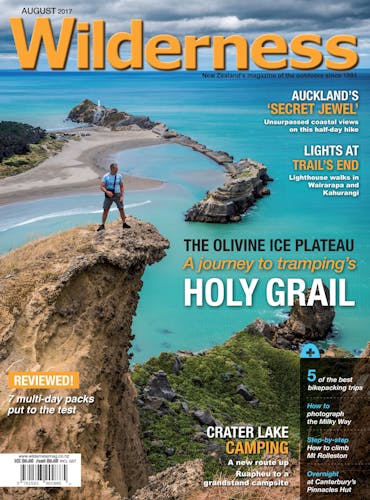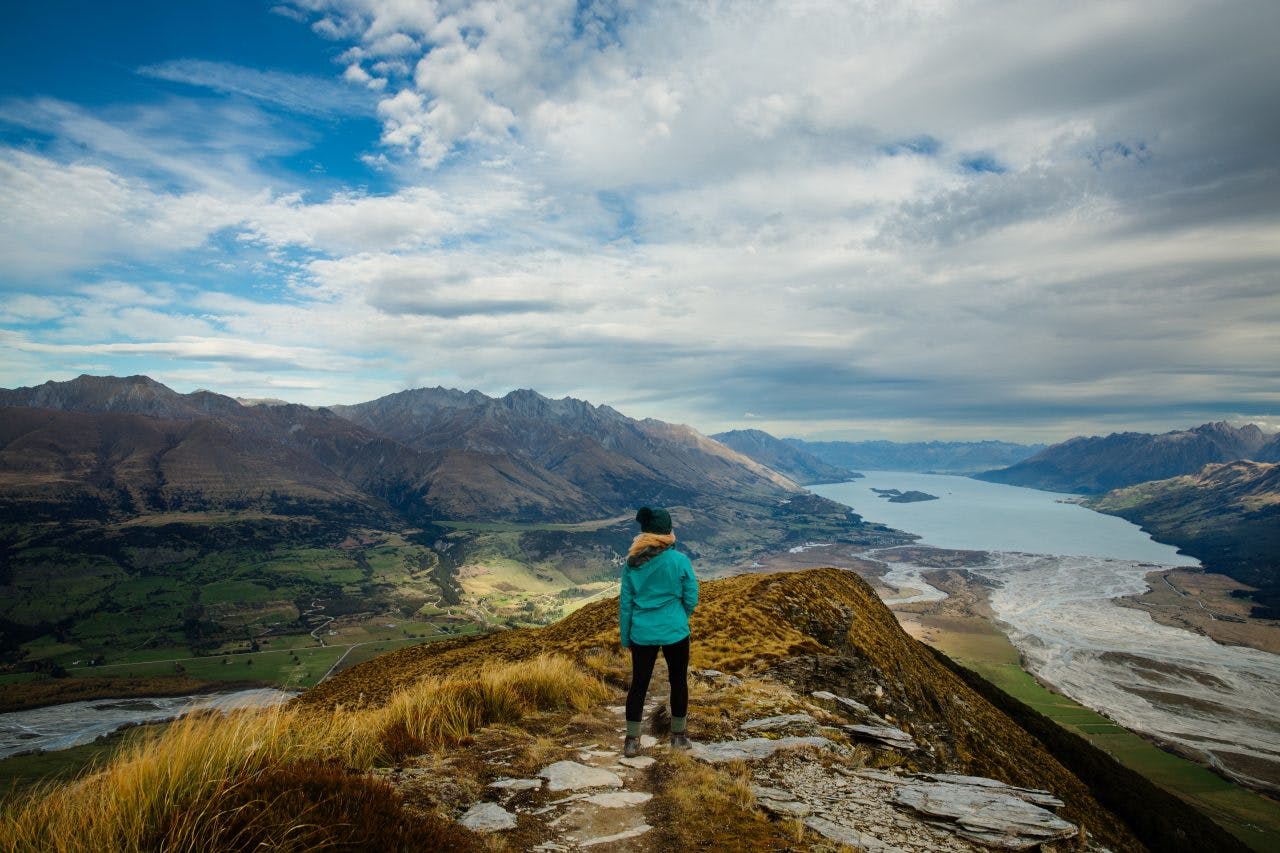Access to recreation on private land is on shaky ground, with landowners increasingly denying access based on perceived health and safety liabilities. Meghan Walker investigates whether those fears are justified, and how outdoor users are coping
Since the 1960s, the rock quarry at Auckland Boys Grammar School has been a haven for climbers.
It’s smack-dab in the middle of the city, and offers some of the best – and most accessible – climbing in the North Island.
There are two main cliffs, simply named ‘short’ and ‘long’, both of which are located next to the school’s playing fields. The routes are anywhere from 10 to 20m high.
On sunny afternoons, Auckland climbers flock to the crag, some getting their first taste of outdoor climbing, others learning skills that keep them safe for climbing further afield. The Auckland section of the New Zealand Alpine Club (NZAC) regularly uses the quarry to teach rockcraft courses.
But in June, Auckland climbers were hit with a heavy blow: the school announced the quarry would be closed for climbing until further notice.
The landowners were advised by their lawyers that due to the 2015 Health and Safety at Work Act, they could be held liable if there was an accident on the wall. This concern isn’t limited to crags; landowners around the country are increasingly limiting public access to all outdoor users, many citing health and safety as their primary concern. Whether or not it’s a viable concern appears to be up to the individual.
In order to help clarify the Act, the New Zealand Walking Access Commission (NZWAC), created a go-to document for farmers and landowners who worry about being held liable if someone is injured on their property. It covers common concerns, such as, whether or not the new regulation significantly changes landowners’ obligations to ensure safety of recreational visitors. The short answer is, no. The only obligation for landowners is to warn visitors of risks that they wouldn’t normally expect, such as tree-felling, blasting, earthmoving machinery or pest control activities.
For example, if a tramper were to trip over a tree root and break their ankle on a farm, a landowner would not be held responsible for the person’s carelessness.
But the NZWAC’s health and safety information isn’t having the desired effect. NZWAC operations manager Ric Cullinane says he often sees farmers fall back on health and safety as an excuse to block access.
“What’s very common, when we’re talking about new access or improving access, is that there’s a lot of arm-waving about health and safety,” Cullinane says. “Whether people actually believe that, or just find it a handy excuse to shut down the discussion, will vary from place to place,” he says.
One such area that’s recently closed for health and safety concerns is the track up Mt Alfred/Ari on Earnslaw Station, Otago. It was once one of the most popular hikes near Glenorchy; the summit is perched above the bushline, offering incredible views of the Southern Alps and Lake Wakatipu.
It was a favourite for trampers in the region, so when station manager Geoffrey Thompson announced he’d be closing track access, it was met with criticism and disappointment from the tramping community. However, Thompson says it was worrying him how many people were getting lost on the mountain. On top of that, he said few people were calling to ask for permission, as they were expected to do.
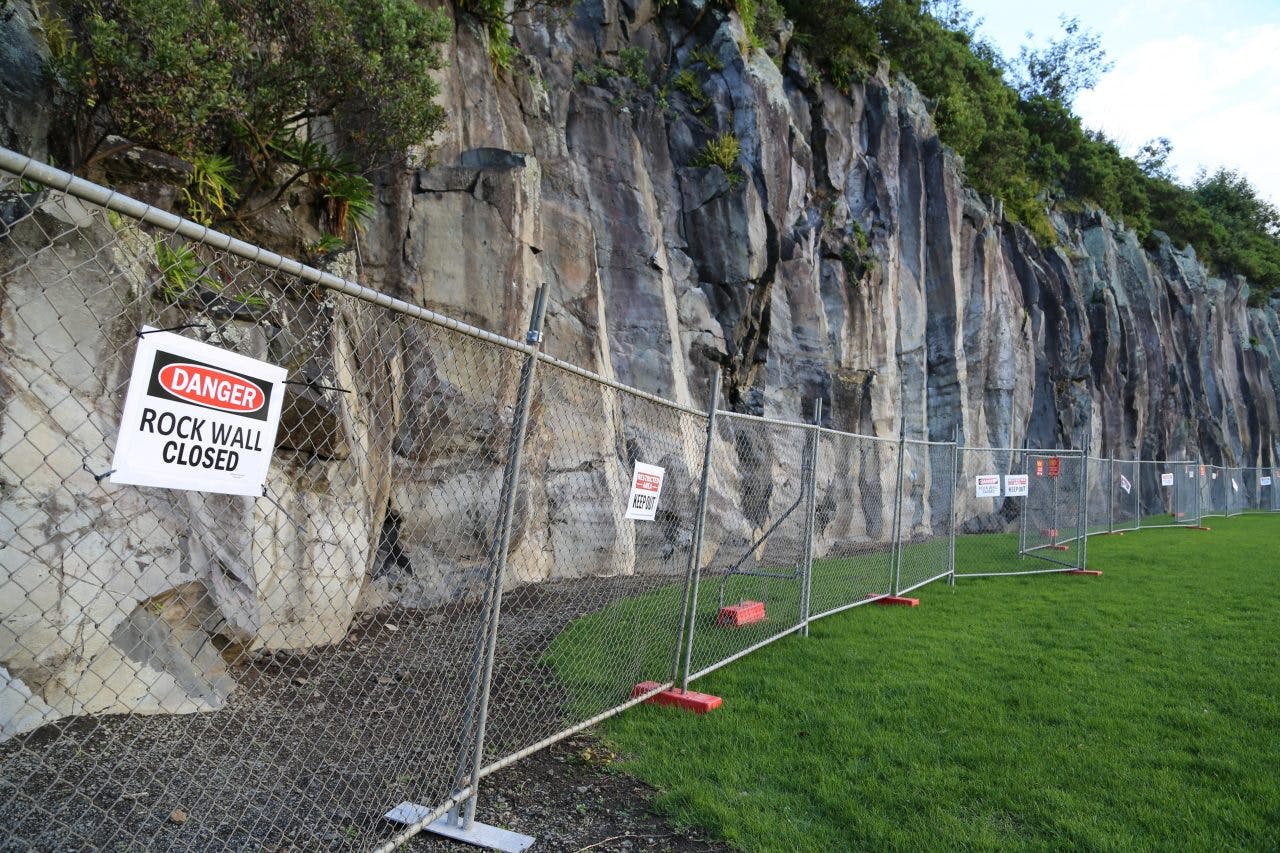
The Auckland Grammar School quarry is closed to climbers. The school is concerned about being held liable should someone get injured there Photo: Meghan Walker
Since closing Mt Alfred in late 2016, Thompson says it’s been a weight off his shoulders.
“Nowadays, farmers have to make a lot of effort to comply with health and safety requirements, with notices and managing people on the property no matter where you go,” Thompson says. “So [closing it] takes a lot of pressure off us. People were going up and getting lost and having to be found, and others were getting injured. As time goes on, there are more and more people who don’t understand mountain tracks and mountain country, so it’s been a big relief to us to know that it’s going to be managed into the future.”
“It’s extremely annoying.
There is no real reason – no legitimate reason.
They just do it because they can.”
– Tramper Danilo Hegg on being denied access to cross Glenthorne Station
He’s had a few individuals who have called and asked for permission to go up even after the closure, but he’s telling everyone the same answer: no. To maintain consistency, he’s turned away experienced trampers who’ve been there multiple times before.
“Generally, they understand it. They might not be happy, but they recognise why we’re doing it.”
One local tramper, Peter de le Mare, has been visiting Mt Alfred every year for the past decade. As vice president of the Wakatipu Tramping Club, he says some of his club members feel put out by the decision. “It was a favourite place for our tramping club to go. So, it’s impacted us, alright,” he says.
However, he says he understands how tramping can interfere with livestock. “Personally, I don’t have a problem with it,” de la Mare says. “As a longtime local, I know how farmers have problems with people disturbing their farming operations. Just walking across a bit of land can move stock.”
But it’s not always livestock shuffling that farmers point to; health and safety is a more common defence for farmers who just don’t want trampers on their land.
“They don’t have a legal worry in that respect, but they’re using it as an excuse,” de la Mare says.
For Thompson, it’s not a livestock concern. After all, he regularly permits access to other parts of the farm.
“People go up into the Earnslaw Basin, and they go up onto Mt Earnslaw from the Rees Valley and they get access through the farm to Diamond Lake to go fishing,” says Thompson “There are lots of places on the farm where we are quite happy for them to access.”
But when it comes to climbing the mountains, “we’re getting to a stage where you’ve got to really manage things a bit more carefully because people don’t seem to understand how fit they need to be”.
In some places, denying access is almost more dangerous for trampers than whatever obstacles they may meet on the farm.
When Dunedin-based Danilo Hegg planned a trip into Casey Tarn in Canterbury, he called Glenthorne Station to request access across the Wilberforce River. There’s a 2km farm road that provides an easy way across the river, but the station manager denied access.
Hegg and his tramping party instead walked around the farm, which he said is a much longer – and potentially dangerous – undertaking.
“It involves major river crossings, and you spend about two-and-a-half hours doing what you could do in about 20 minutes on a formed road,” Hegg says. “For just a 2km section across their land, they block access to a valley that is an immense playground.
“It’s extremely annoying. There is no real reason – no legitimate reason. They just do it because they can.”
Wilderness contacted the Glenthorne Station manager, but he was overseas and unavailable for comment.
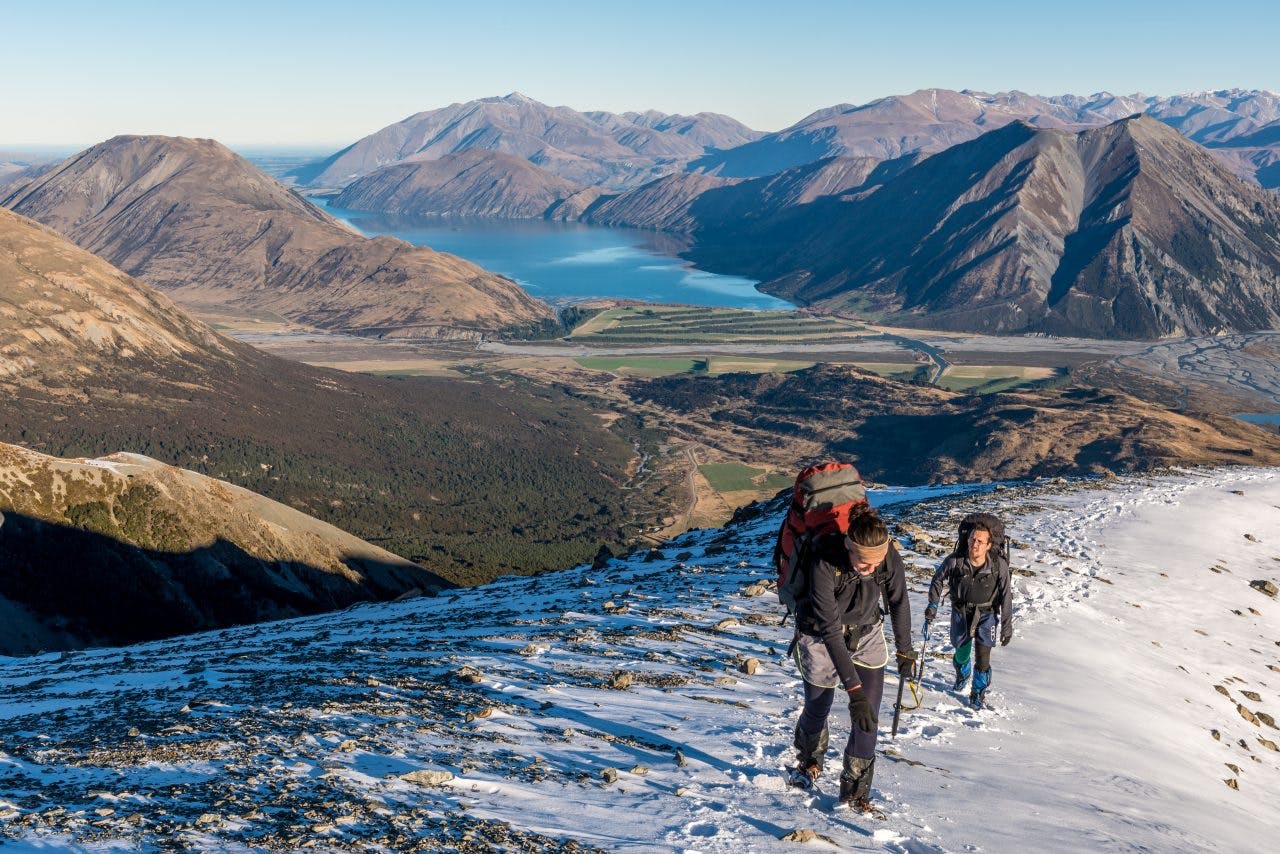
These trampers were forced on a 2.5hr detour when climbing to the Birdwood Range after permission to cross Glenthorne Station (pictured, middle) was refused. Photo: Danilo Hegg
When it comes to negotiating access for tramping areas, it usually comes down to groups such as the Federated Mountain Clubs and NZWAC. Rarely do trampers take matters into their own hands. This is partly because there are so many options for tramping. Rock climbers, on the other hand, have to fight to keep every existing crag open. Many climbers work directly with landowners to maintain relationships and access.
Incoming NZAC president John Palmer knows firsthand the importance of fostering good relationships. For years, he’s worked closely with the Ngati te Maunga which owns Whanganui Bay at Lake Taupo. It’s one of the most renowned climbing areas in the central North Island, and a strong relationship between the climbing community and the trust which oversees the bay has helped keep it open to climbers for many years.
However, a recent changeover of the chairperson and a number of trustees resulted in the area closing to climbers in October 2016. The new trust members weren’t familiar with rock climbing, and didn’t see why they should allow “rockies” into their community on a regular basis.
“They’d been aware that Whanganui Bay had been used by climbers, but had no context for that use, no existing relationships and had a perspective that the impact of climbing was a negative and not a positive,” Palmer says.
Palmer met with the new board members, explained how significant the area is to rock climbers, and assured them the area would be well-respected. He’s also developing an official access agreement with the trust.
“We’re developing a climber registration system where every time you go there, you must sign in on your smartphone at the top of the road and say who you are and what your email address is, and you’ll be emailed a list of the access rules,” Palmer explains. “That, I think, is going to be a template that gets more common around New Zealand for crag access to private land.”
It’s a concept that could be used in other areas of the country, and could provide that extra bit of communication to help landowners overcome their health and safety anxieties.
Another area that’s been on shaky ground for climbers is Central Waikato. There are several crags on farms in the region, including the popular Froggatt Edge in Wharepapa South.
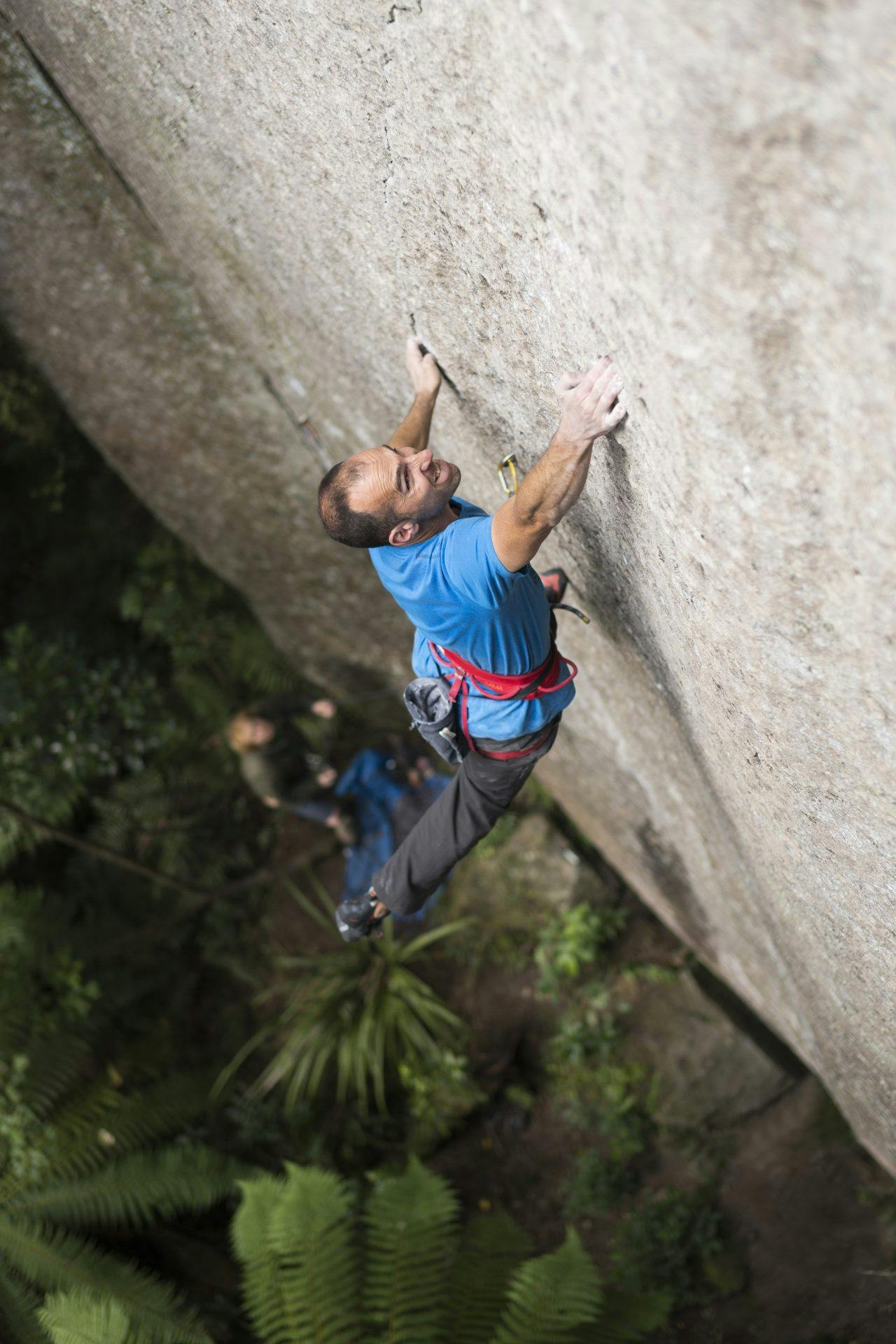
Incoming NZAC president John Palmer, climbing at Whanganui Bay, is determined to resolve access issues on private land. Photo: Tom Hoyle
The various owners of Froggatt over the last few decades have permitted climbers on the farm. Health and safety is not a concern for them, because, as Palmer explains, the farmers understand that the crag is not an active part of the workplace for the farmer.
“There’s an express set of clauses in the Act which say ‘The whole of the farm is not a workplace for the purposes of this Act.’ It’s only the central farm buildings, the primary residence, and then wherever else on the farm the farmer or staff is working. So the workplace moves as the activity on the farm moves,” Palmer says.
The Froggatt Edge landowner understands he is absolved from responsibility, and will maintain access so long as climbers abide by some specific signposted rules. For the most part, climbers respect these rules, but Palmer says it’s far too common to see dogs at the crag, which is a huge problem for farmers. In fact, another crag on a farm near Froggatt closed recently because climbers weren’t respecting the rules. Palmer says the owners cited health and safety concerns as their reason for closing, but he believes it was likely due to repeated rule-breaking.
In the case of the health and safety concerns for the Auckland Grammar School quarry, the school board has been advised that the rock wall is part of their workplace, which means if anyone is hurt there, the school could be responsible under the Act. However, Palmer says that if they can “carve out” the cliff faces from the school’s workplace boundaries, it could help to absolve the school of any liability were someone to be injured while climbing.
Climbers have no central advocate for access like trampers do with the Walking Access Commission. Establishing an access organisation will be a priority of Palmer’s during his time as NZAC president.
“We don’t have a coordinated body dealing with this,” he says. “I want to establish a paid resource to develop a more coordinated approach to providing access on public and private land, and to take a professional, climber-led approach to managing advocacy and access.”
Palmer says it’s also a cultural change; while he admits he cherishes climbing’s dirtbag culture, it’s not an identity that’s taken very seriously.
“Somewhere along the way, rock climbers have failed to sell their sport. We haven’t managed to convince everyone that it’s awesome. It’s just seen as being a risk,” he says.
“As a community, climbers need to stop cutting corners and developing crags on the sly. We need to stand up and say we’re not going to apologise for being rock climbers. We actually think it’s awesome. And when you know that, you’ll think that too.”





